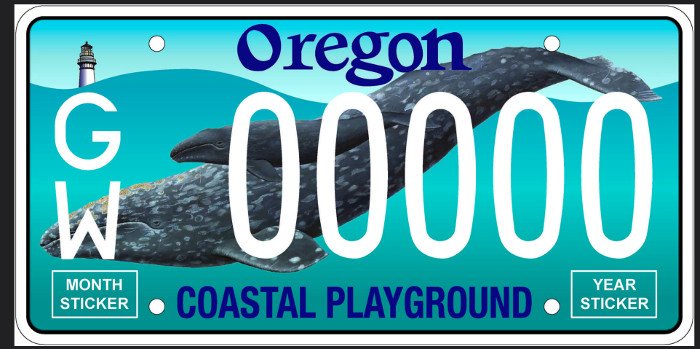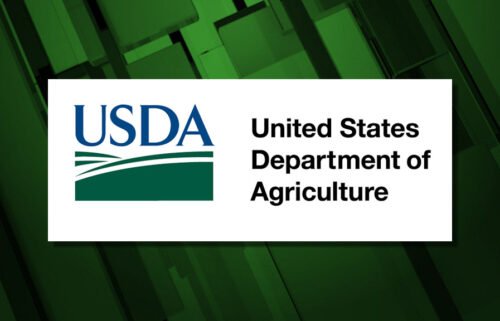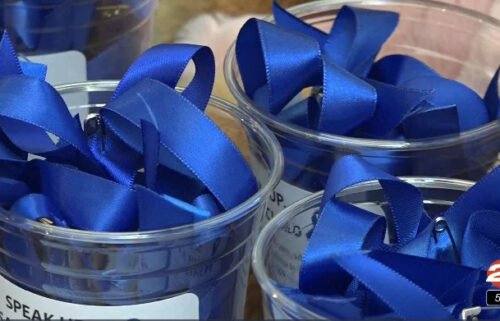Oregon whale license plate sales raise $300K for OSU research

NEWPORT, Ore. (KTVZ) – Nearly 10,000 Oregonians have purchased gray whale license plates since they went on sale a year ago, providing critical support for Oregon State University researchers studying gray whales that frequent Oregon’s waters.
The license plate, with the image of a gray whale mother and her calf, went on sale at Oregon Department of Motor Vehicle offices on Feb. 1, 2019. The plates cost $40 to order or renew, with approximately $35 of each sale going to OSU’s Marine Mammal Institute based at the Hatfield Marine Science Center in Newport.
Through December, the license plates generated about $300,000 for the institute.
“We deeply appreciate the public’s support of our programs,” said Lisa T. Ballance, director of the Marine Mammal Institute. “Because these funds are generated through sales of Oregon license plates, we are committed to using the proceeds to support Oregon-focused projects.
“To maximize the benefit of these funds, we are using a three-pronged funding allocation model that emphasizes education, outreach and research. Our ultimate goal is to connect Oregonians across the state to the science and conservation of whales here in Oregon.”
Marine ecologist Leigh Torres, an assistant professor with the Marine Mammal Institute, was the first beneficiary of the plate funds. Torres, who leads the Geospatial Ecology of Marine Megafauna Laboratory, was awarded funds to continue research focused on Oregon’s “summer resident” gray whales during 2019.
Most gray whales migrate from breeding grounds in Mexico to feeding grounds in northern Canada and Alaska, where they spend the summer. The Pacific Coast Feeding Group, as Oregon’s gray whales are known, spend the summer months feeding in coastal waters of Oregon, as well as northern California, Washington and southern Canada.
Torres and her team conduct “health check-ups” on the whales by collecting photographs and video from small boats and drones and fecal samples using nets. Torres is collaborating on a part of the project with Scott Baker, a professor and lead of the Marine Mammal Institute’s Cetacean Conservation and Genomics Laboratory, whose team will analyze the collected whale fecal matter to determine which species of prey are important for gray whales.
“We want to understand how health varies in these long-lived animals,” Torres said. “The data we collect through these check-ups will ultimately allow us to better protect this population and their habitat to ensure that future generations of Oregonians can enjoy seeing them in our coastal waters.
“I’m really grateful to everyone who has supported us in this effort.”
Funds from plate sales also will allow Torres and her team to continue monitoring gray whales off the coast of Port Orford in summer 2020. In Port Orford, researchers team with local high school students and OSU undergraduates to study whale behavior and their prey along the coast. At the end of every field season, the research team shares its findings and experience with the community at a public presentation.
“The students are involved in all aspects of the research and learn skills and knowledge about scientific data collection, teamwork, marine ecology and science communication,” Torres said. “This internship gives students firsthand experience in marine science and many graduates of our program have gone on to study biology in college and marine science in graduate school.
“Our goal is to give students skills and inspiration to study the ocean and for them to share their passion with their community, now and into the future.”
In addition to gray whale research projects, license plate funds will strengthen a Newport-based whale entanglement response team to aid whales caught in debris such as fishing gear.
“Entanglement in fishing gear is currently a threat to whales throughout U.S. waters and elsewhere,” said Ballance, a marine ecologist who assumed the helm of the institute in October. “A network of whale entanglement responders up and down the West Coast works to disentangle these whales. We are responsible for the Oregon coast. License plate funds will enhance our training opportunities and provide essential equipment to enable us to be more responsive and effective in our disentanglement response.”
The Marine Mammal Institute was established in 2006 as an expansion of a research program directed by Bruce Mate, an internationally recognized expert in marine mammal research. Mate, now an emeritus professor, led the effort to launch the license plate project with critical support from state Rep. David Gomberg of District 10 on the central coast.
Renowned wildlife illustrator Pieter Folkens drew the gray whale mother and calf pair that appear on the license plates. Emmy-award winning graphic artist Pete McKeeman added a two-toned background representing the sea and sky and highlighting a coastal lighthouse in the upper left corner. The bottom inscription reads “Coastal Playground,” reflecting the importance of the coast to marine animals and to coastal tourism.
The license plate sales offer a potential stream of revenue for years to come. The gray whale plate will remain available for purchase as long as 2,000 new plates are issued each year, and the institute also will receive funds when existing plates are renewed. For more information about the plates, visit: whaleplate.com.



